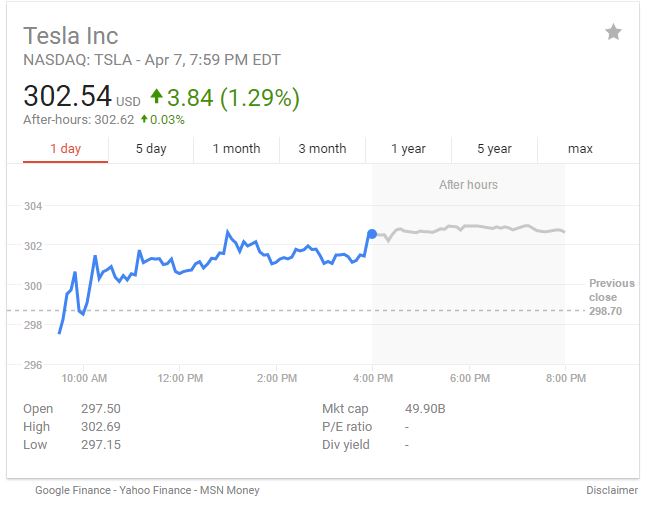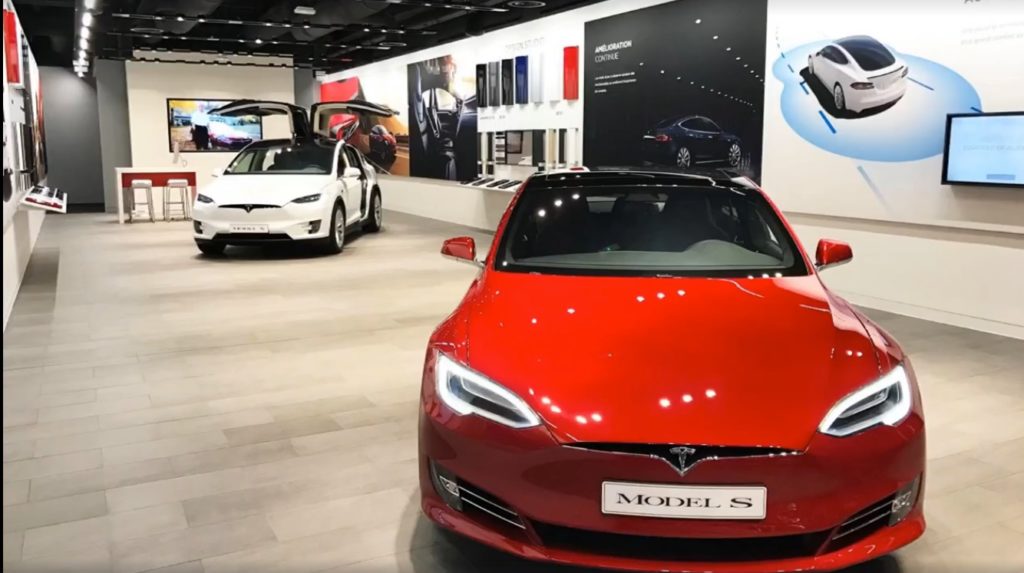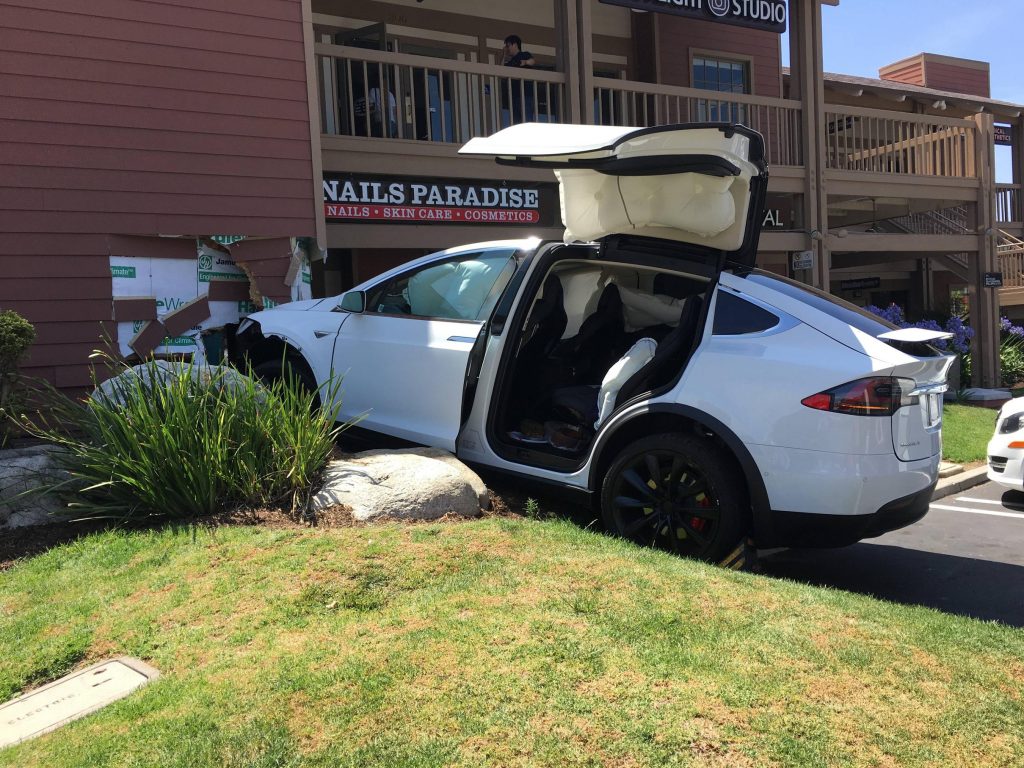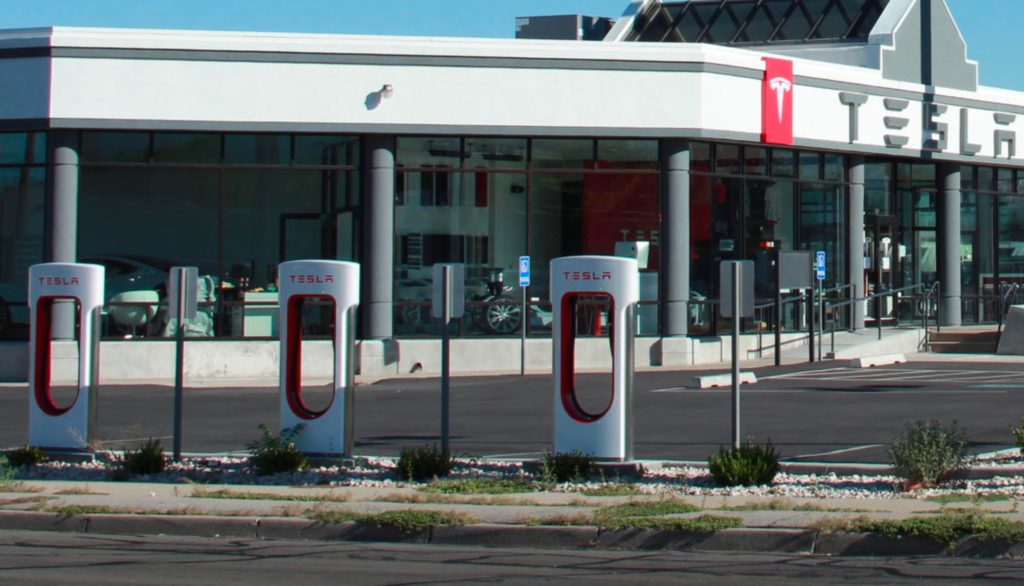News
Tesla Top 5 Week in Review: Utah Bans Tesla Sales, Controversy Over Drivers Data, Model 3 Sensors, and More
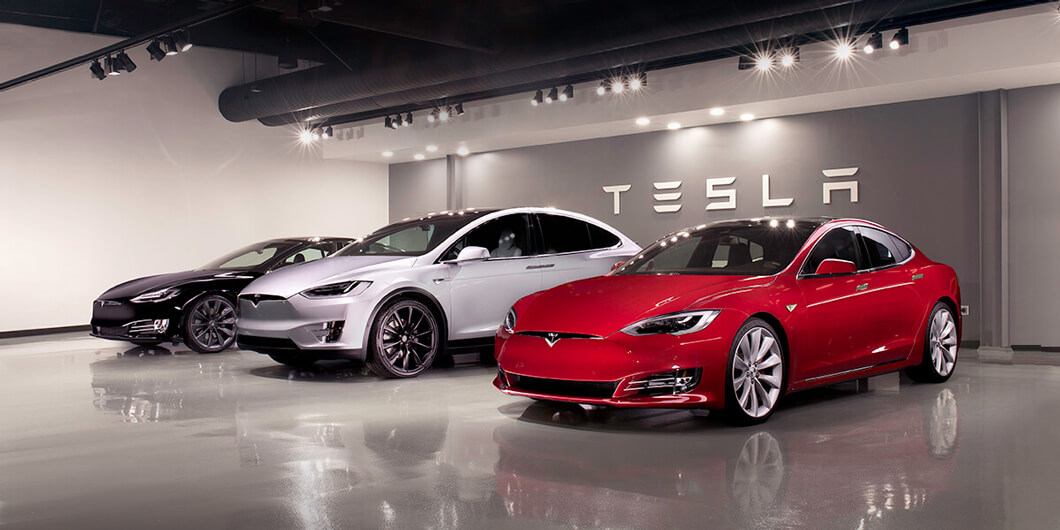
What a week it was for Tesla! Reaching all-time trading highs was certainly an achievement to celebrate. So, too, was the 2017 Q1 earnings report, in which Tesla excelled in deliveries versus same month, previous year. Teslarati gets the first scoop a Model 3 release candidate in the wild, with reports of new sensors being spotted. Tesla’s company practice of divulging individual driver data became a contested topic, as did the Utah Supreme Court’s decision to prohibit Tesla direct sales to customers. Here are those stories and more on our Teslarati Top 5 Week in Review.
Tesla steamrolls US automakers to become #1 by market cap
Tesla, Inc. (TSLA) stock, which had previously traded at $280 in February, achieved its all-time high this week, up from the March 31, 2017 close of market mark of $291.74. Tesla’s performance pushed the company’s market capitalization past that of Ford for the first time ever. Ford’s market capitalization at about $44.8 billion stood just about $3 billion under Tesla’s. Next in line for Tesla is GM’s $51.4 billion market cap. Tesla sold only a fraction of Ford’s 6.7 million cars and GM’s 10 million cars in 2016; both offer investors the comfort of healthy balance sheets and steady profits. However, Tesla investors seem willing to hold out for the company’s future potential for still higher growth ahead. Historical malaise over missed delivery targets may be dissipating.
Tesla delivers a record 25,000 Model S, X in Q1 2017, 69% increase over Q1 2016
With Model S deliveries at 3,450 and Model X deliveries at 11,550, Tesla achieved a new quarterly record to start 2017. Selling just over 25,000 vehicles in Q1 represented a 69% increase over the same month, Q1 2016. Tesla argues that vehicle deliveries symbolize only one measure of the company’s financial performance; quarterly financial results, they say, depend on a variety of factors, including the cost of sales, foreign exchange movements, and mix of directly leased vehicles.
New sensors spotted on Tesla Model 3: Autopilot 2.0 could have 10 cameras
Up until Tuesday, the Model 3 was assumed to have eight cameras: three facing forwards, two in the B-pillar between the front and rear doors, two in the front fenders, and one in the rear by the hatch latch. (Radar and ultrasonic sensors will also provide the computer with contextual data.) The recent sighting indicates that two additional sensors are located by the C-pillars between the rear door and back. This is significant because Tesla CEO Elon Musk has repeatedly stated that the Model 3 design is meant to include autonomous driving. With a dashboard that lacks a speedometer on the driver’s side and, instead, will fade in and out of opacity on the central control screen, the Model 3 technology evolution will be fascinating. Its sensors and cameras will provide crucial data about the vehicle’s surroundings, bringing the future to today.
Tesla defends its right to release individual driver data to disprove claims
Tesla’s company policies about owner privacy has been under scrutiny this week, with accusations that it divulges drivers’ performance information in order to protect its self-driving car technology. Unlike other research institutions, Tesla does not acquire permission from its drivers, who are supplying data about self-driving technology system responses. Moreover, while the company has disseminated specific driver information to the media following crashes, it has refused thus far to share that same data with the drivers. Some accidents involving Tesla all-electric vehicles have involved the Tesla Autopilot system, but in 2016 the U.S. National Highway Traffic Safety Administration cleared Tesla of any wrong-doing in a fatal crash in which Autopilot was engaged.
Tesla loses 5-0 battle in Utah over right to sell direct to consumers
The Utah Supreme Court this week has upheld a previous ruling which prohibits Tesla and other automakers from selling directly to customers. Tesla contested Utah’s claim of manufacturers and dealer owners being one and the same, saying its direct sales to customers distinguish it from independent dealerships. In essence, the Utah Supreme Court justices chose not to address when Utah law does or does not block an automaker from direct sales.

News
Tesla launches crazy Full Self-Driving free trial: here’s how you can get it
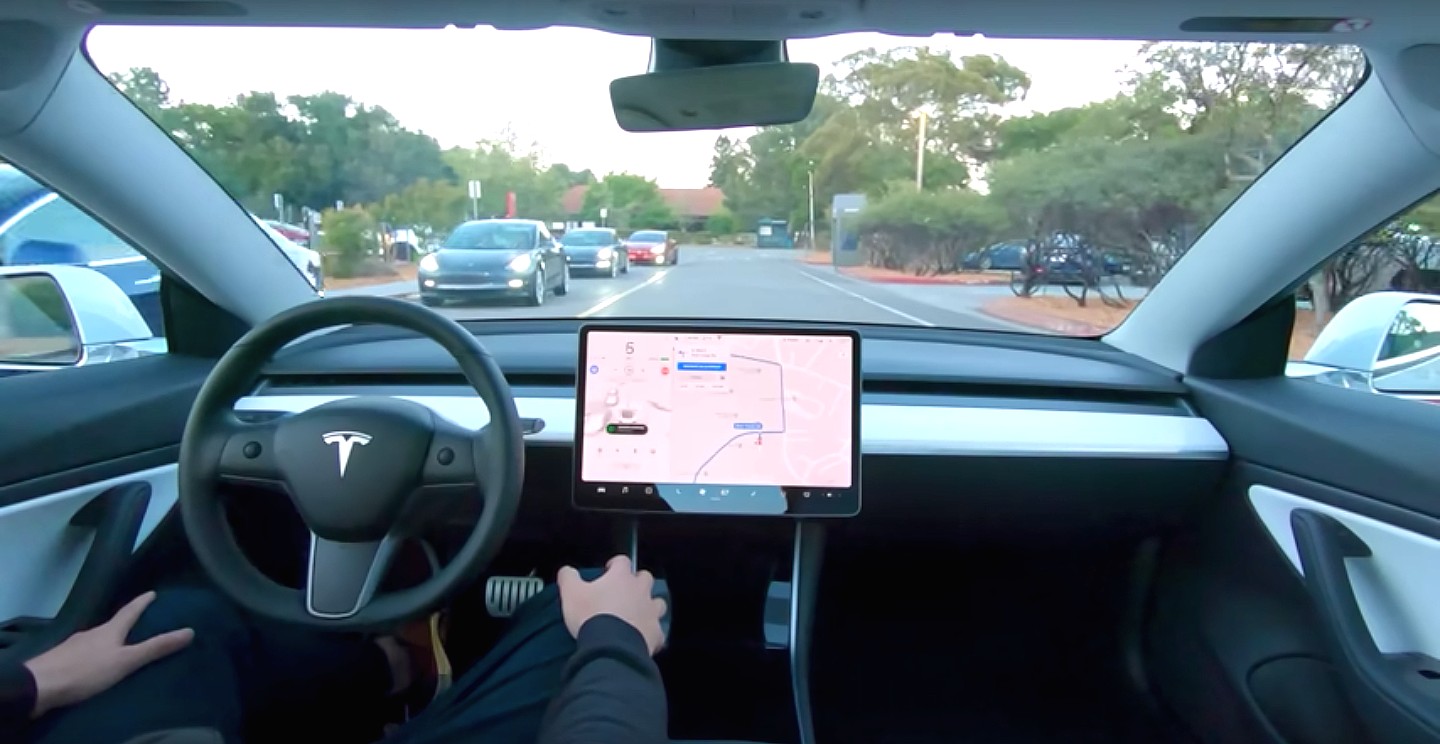
Tesla is launching a crazy Full Self-Driving free trial, which will enable owners who have not purchased the suite outright to try it for 30 days.
There are a handful of stipulations that will be needed in order for you to qualify for the free trial, which was announced on Thursday night.
Tesla said the trial is for v14, the company’s latest version of the Full Self-Driving suite, and will be available to new and existing Model S, Model 3, Model X, Model Y, and Cybertruck owners, who will have the opportunity to try the latest features, including Speed Profiles, Arrival Options, and other new upgrades.
🚨 Tesla is launching a free 30-day trial of Full Self-Driving in North America for owners.
It includes every model, but you need v14.2 or later, and you cannot have already purchased the suite outright. https://t.co/8CNmxxOkVl
— TESLARATI (@Teslarati) November 27, 2025
You must own one of the five Tesla models, have Full Self-Driving v14.2 or later, and have an eligible vehicle in the United States, Puerto Rico, Mexico, or Canada.
The company said it is a non-transferable trial, which is not redeemable for cash. Tesla is reaching out to owners via email to give them the opportunity to enable the Full Self-Driving trial.
Those who are subscribed to the monthly Full Self-Driving program are eligible, so they will essentially get a free month of the suite.
Once it is installed, the trial will begin, and the 30-day countdown will begin.
Tesla is making a major push to increase its Full Self-Driving take rate, as it revealed that about 12 percent of owners are users of the program during its recent earnings call.
Tesla CFO Vaibhav Taneja said during the call:
“We feel that as people experience the supervised FSD at scale, demand for our vehicles, like Elon said, would increase significantly. On the FSD adoption front, we’ve continued to see decent progress. However, note that the total paid FSD customer base is still small, around 12% of our current fleet.”
Earlier today, we reported on Tesla also launching a small-scale advertising campaign on X for the Full Self-Driving suite, hoping to increase adoption.
Tesla Full Self-Driving warrants huge switch-up on essential company strategy
It appears most people are pretty content with the subscription program. It costs just $99 a month, in comparison to the $8,000 fee it is for the outright purchase.
News
Tesla Full Self-Driving warrants huge switch-up on essential company strategy
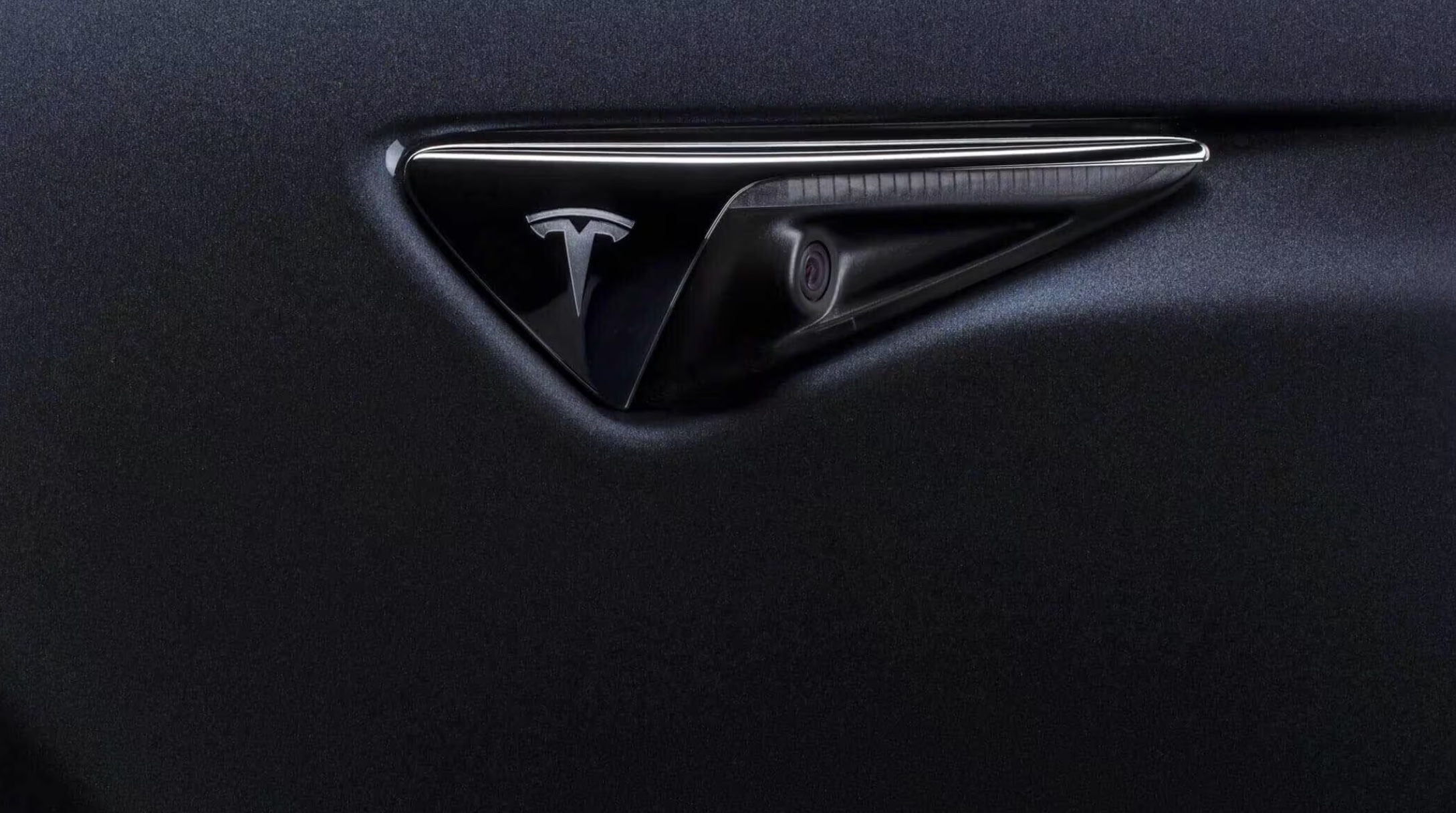
Tesla Full Self-Driving has warranted a huge switch-up on an essential company strategy as the automaker is hoping to increase the take rate of the ADAS suite.
Unlike other automotive companies, Tesla has long been an outlier, as it has famously ditched a traditional advertising strategy in favor of organic buzz, natural word-of-mouth through its production innovation, and utilizing CEO Elon Musk’s huge social media presence to push its products.
Tesla has taken the money that it would normally spend on advertising and utilized it for R&D purposes. For a long time, it yielded great results, and ironically, Tesla saw benefits from other EV makers running ads.
Tesla counters jab at lack of advertising with perfect response
However, in recent years, Tesla has decided to adjust this strategy, showing a need to expand beyond its core enthusiast base, which is large, but does not span over millions and millions as it would need to fend off global EV competitors, which have become more well-rounded and a better threat to the company.
In 2024 and 2025, Tesla started utilizing ads to spread knowledge about its products. This is continuing, as Full Self-Driving ads are now being spotted on social media platforms, most notably, X, which is owned by Musk:
NEWS: Tesla is running paid advertisements on X about FSD (Supervised). Here’s an ad they started running yesterday: pic.twitter.com/IHVywLMyTd
— Sawyer Merritt (@SawyerMerritt) November 25, 2025
Interestingly, Tesla’s strategy on FSD advertising is present in Musk’s new compensation package, as the eleventh tranche describes a goal of achieving 10 million active paid FSD subscriptions.
Full Self-Driving is truly Tesla’s primary focus moving forward, although it could be argued that it also has a special type of dedication toward its Optimus robot project. However, FSD will ultimately become the basis for the Robotaxi, which will enable autonomous ride-sharing across the globe as it is permitted in more locations.
Tesla has been adjusting its advertising strategy over the past couple of years, and it seems it is focused on more ways to spread awareness about its products. It will be interesting to see if the company will expand its spending even further, as it has yet to put on a commercial during live television.
We wouldn’t put it out of the question, at least not yet.
News
Tesla Model Y Standard: first impressions from a Premium owner
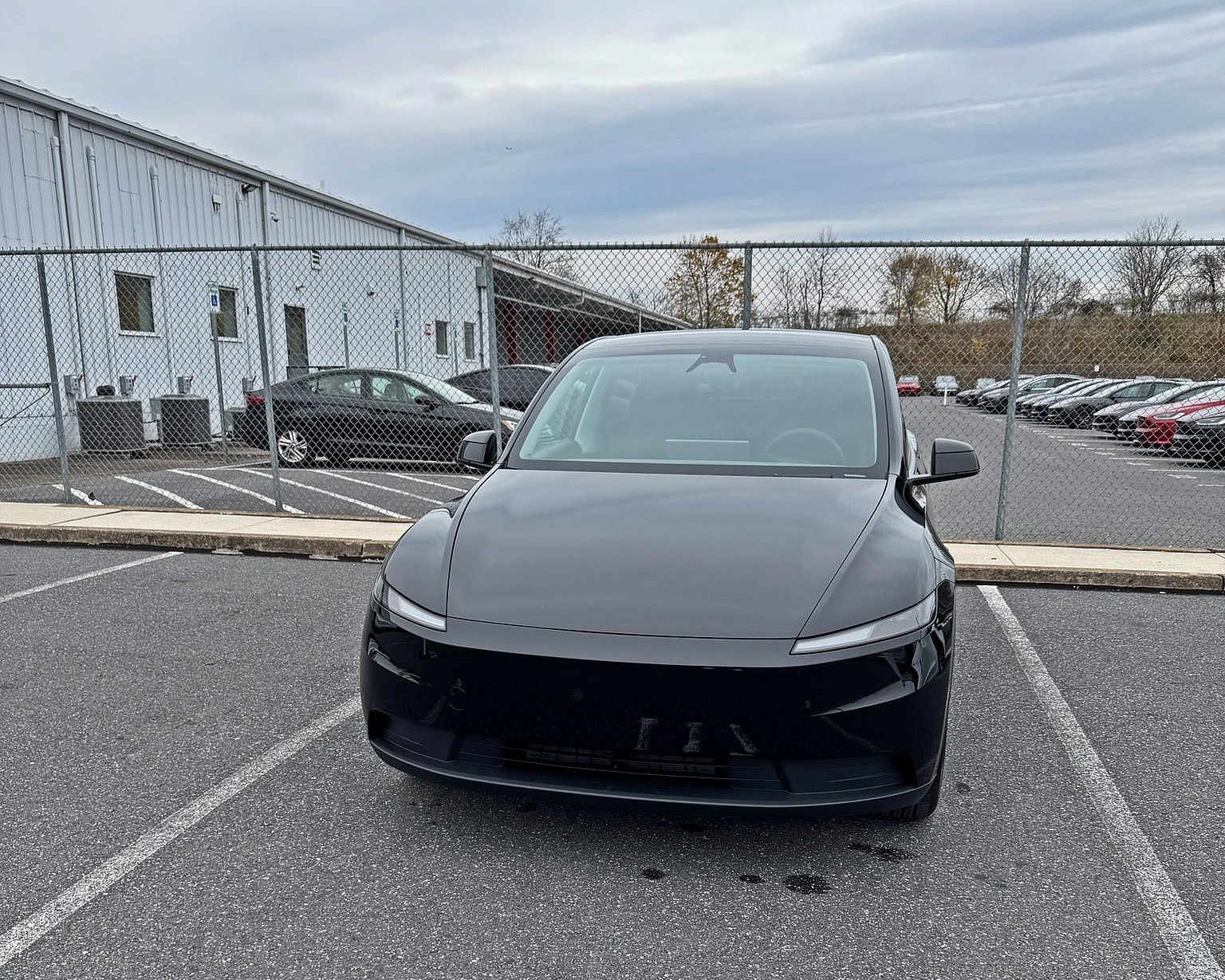
Tesla was nice enough to hook us up with the new Model Y “Standard” trim for a few days, and while we’ll be sure to fill you in on the full experience in the coming days, there are a lot of differences we noticed right off the bat, which make the ownership experience different from the “Premium” configuration level.
I purchased a Model Y Long Range All-Wheel-Drive back in August and took delivery just two weeks later. Through the first three months of owning my car, I’ve come to love so many things about the Tesla experience.
I traded my ICE vehicle for a Tesla Model Y: here’s how it went
However, I was interested in experiencing the affordable trim and seeing whether I would miss any of the voided features of the “Premium” Model Y.
Through the first 24 hours, here are my first impressions of the Model Y Standard as a Premium trim level owner:
Overall Aesthetic
The lack of a light bar is not something that is a dealbreaker. In fact, I would argue that the Model Y Standard’s more traditional headlight design is just as pleasing from an aesthetic standpoint.
The car is great looking from top to bottom; there are not a substantial number of differences besides the lack of a lightbar on both the front and the back of the car.
Overall, it is a very sleek vehicle, but the major changes are obviously with the interior.
Interior Changes
This is where the big differences are, and some of the things I’ve gotten used to in the Premium are not included. If I didn’t have a Premium Model Y already, I’m not sure I’d miss some of the things that are not present in the Standard trim, but I believe I’d get annoyed with it.
First impressions:
✅ Interior is excellent. I definitely miss the additional storage already that is available in my Premium. I could definitely get over it though
✅ Noticeable step down in sound system. Long Time by Boston absolutely cranks in the Premium; it’s still very… https://t.co/JNWvxTd8p1
— TESLARATI (@Teslarati) November 25, 2025
Storage
The Premium has a large storage compartment between the cupholders and the wireless charger, which is not present in the Standard trim. Instead, it is more like the Cybertruck, as there is a pass-through and floor storage.
I think that the pass-through is nice, but the additional storage is something I take advantage of, especially as someone who films Full Self-Driving videos, which requires hauling mounts, GoPros, and other accessories.
The sleekness of the Premium trim is also something I prefer; I really enjoy having the ability to close those compartments and cover the cupholders.
Obviously, this is a really trivial issue and not something that is substantially impactful from an ownership experience. If I weren’t already an owner, I am not sure I’d even have something to complain about.
Material Differences
The Premium trim seats are completely Vegan Leather, which I really do like, even as someone who doesn’t really love leather seats due to their temperature dependency.
The Standard trim features a Textile and Vegan hybrid, which has half of the seat a different material than the other.
The material is very similar to what I had in my previous car, a Bronco Sport. It was very durable, easy to clean, dried quickly, and hid a lot of things that leather does not, like oils from your skin, which constantly require attention to keep your interior looking fresh.
The wireless charger is also a different material, as the Premium features an Alcantara material on that. The Standard has a rubberized and textured backing, which looks good, too. They’re both more than suitable.
Other Missing Features
The Standard lacks a few minor things, most noticeably is the ambient lighting. The biggest change, however, and something I really miss, is the glass roof.
A lot of people told me that when I got my Model Y, I wouldn’t even notice the glass roof after a few weeks. That could not be further from the truth. I look out of it all the time, and it’s one of my family’s favorite parts of the car.
My Fiancè and I really love parking and watching Netflix when we pick food up, especially when it’s raining, because the glass roof gives such a great view.
We also loved it as Fall arrived, because it was great to look at the foliage.
Buy the Tesla.
Enjoy the glass roof. pic.twitter.com/r2GDyOEEWu
— TESLARATI (@Teslarati) October 28, 2025
Bigger Differences
There are also a handful of very noticeable differences from the overall cabin experience, especially with the sound system.
Much Weaker Sound System
The Model Y Standard has just 7 speakers and 1 amp, with no subwoofer. This is a significant step down from the 13-15 speakers in the Premium Long Range AWD Model Y, the 2 amps it comes with, and 1 subwoofer in the trunk.
I usually like to listen to Long Time by Boston to test out a sound system, and it was noticeably weaker in the Standard. It was missing a big portion of the umph that is provided by the Premium’s sound system.
Cabin Noise
It feels like the Cabin Noise is definitely more noticeable in the Standard, which is something I really love about my Model Y. It is able to dampen so much road noise from louder cars, and I don’t feel as if it is very quiet in the Standard.
This is perhaps the biggest make-or-break for me with this car. I truly have been spoiled by how quiet the cabin is in the Premium, and it’s due to the lack of acoustic-lined glass in the Standard.
I will be doing a more in-depth review of the Model Y Standard, especially with ride quality, later this week.
